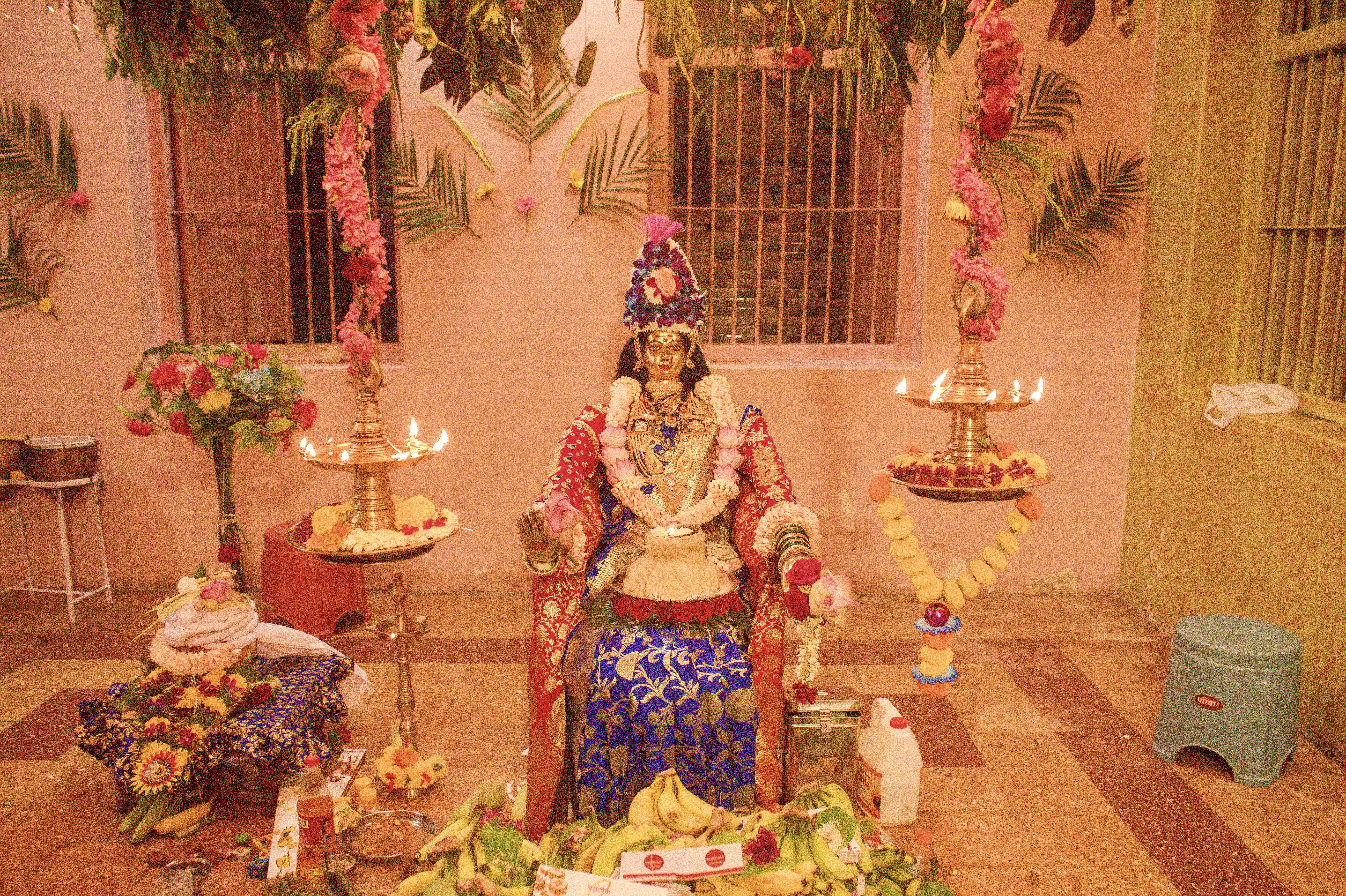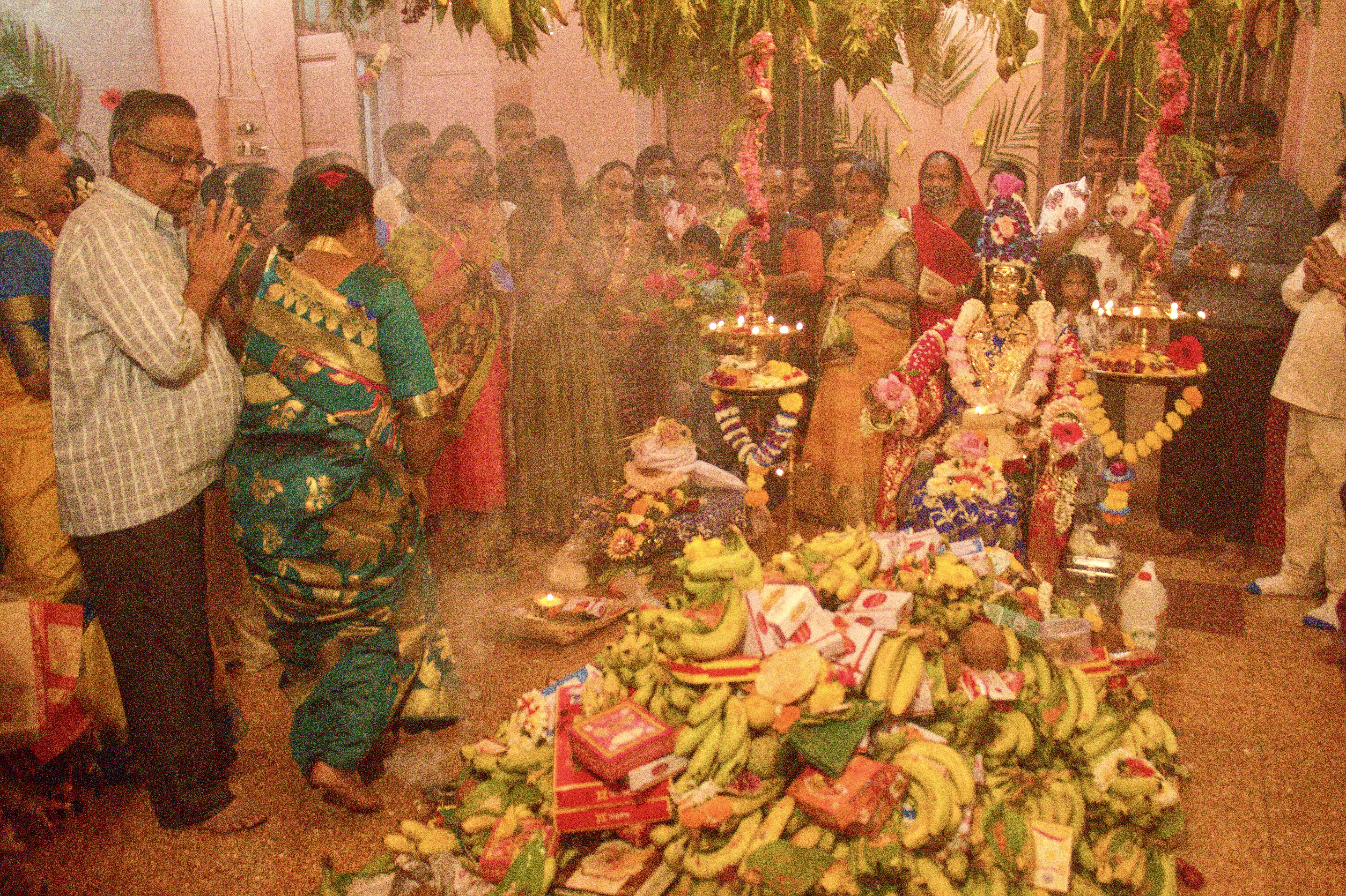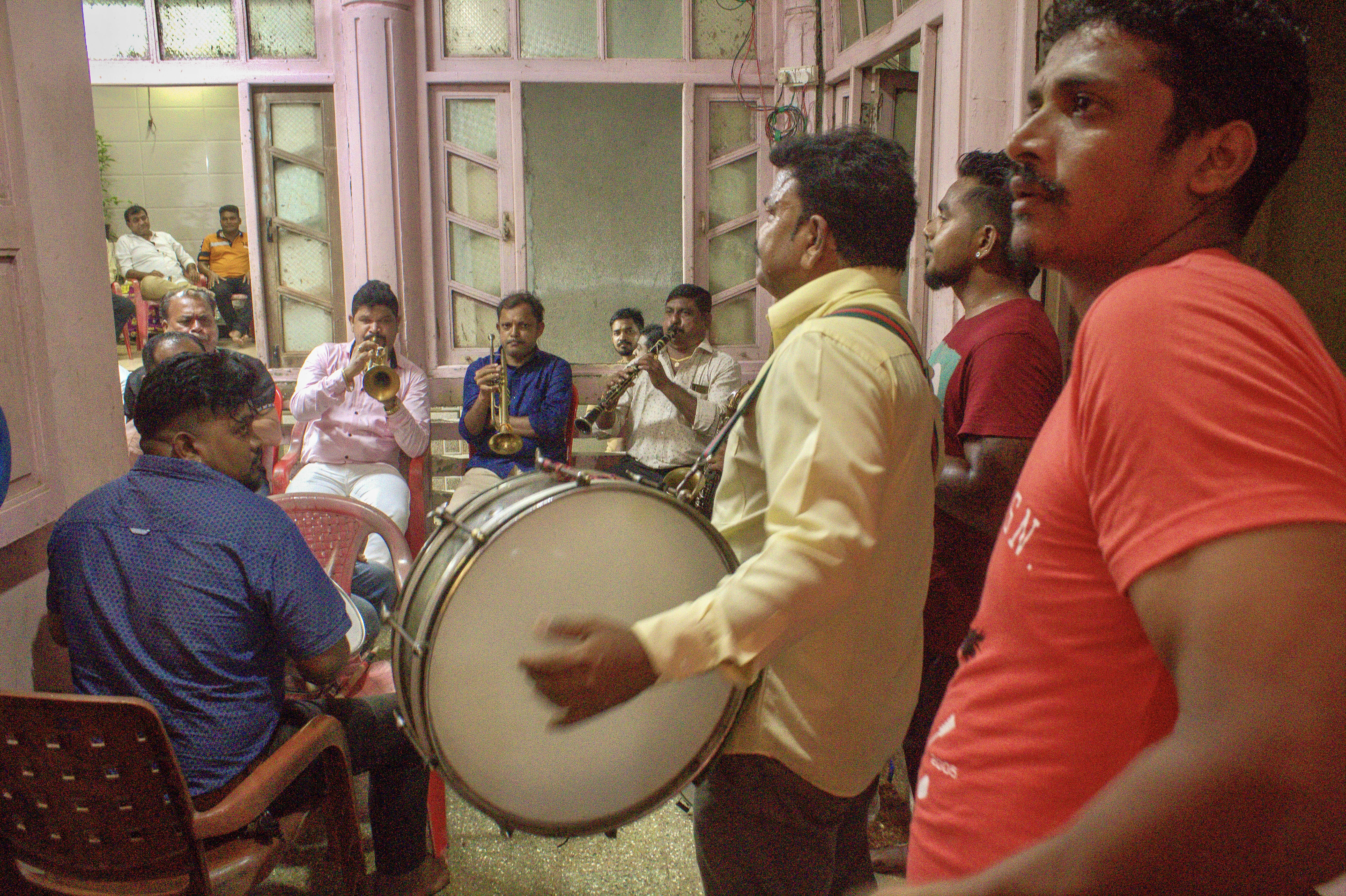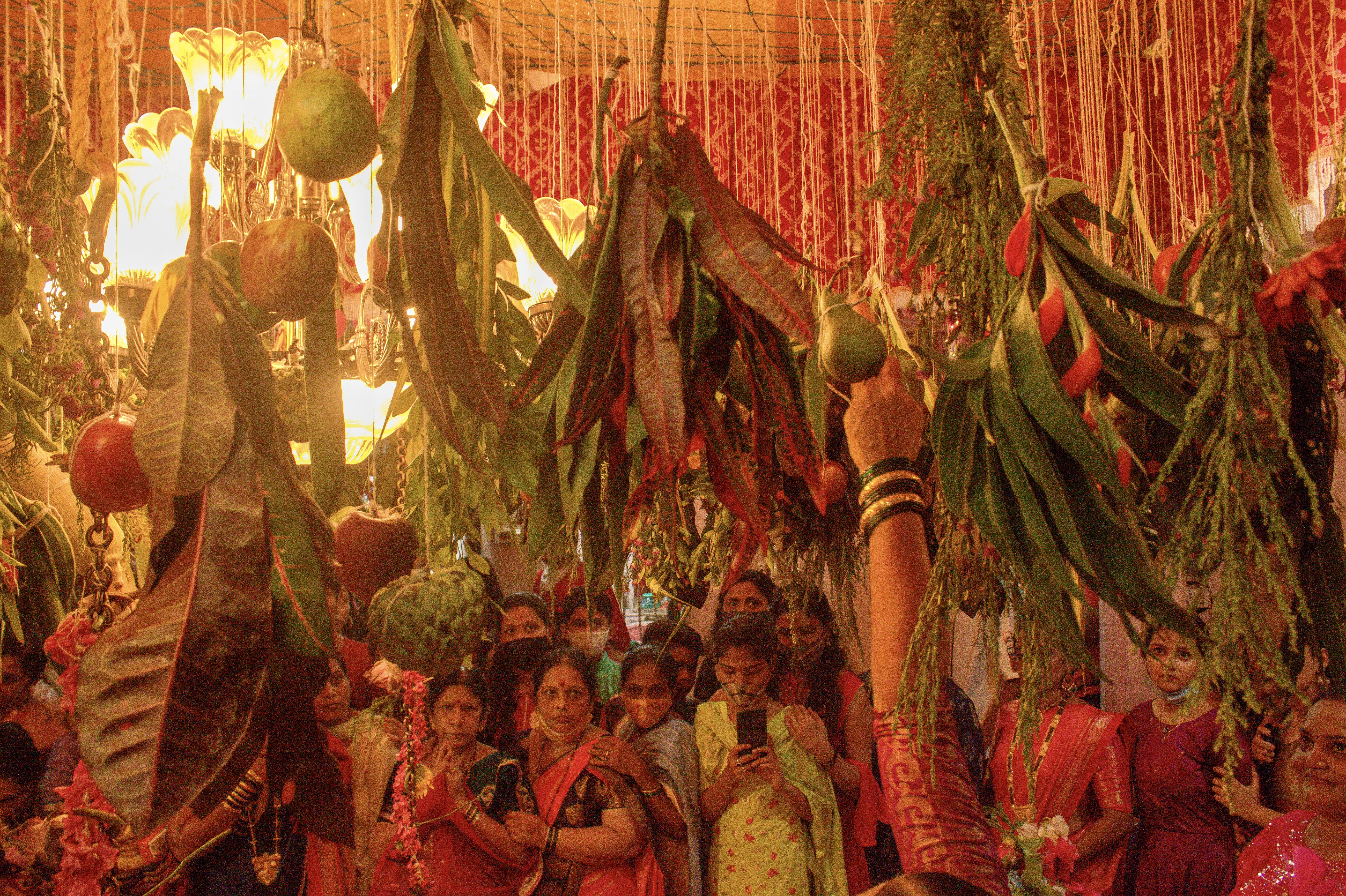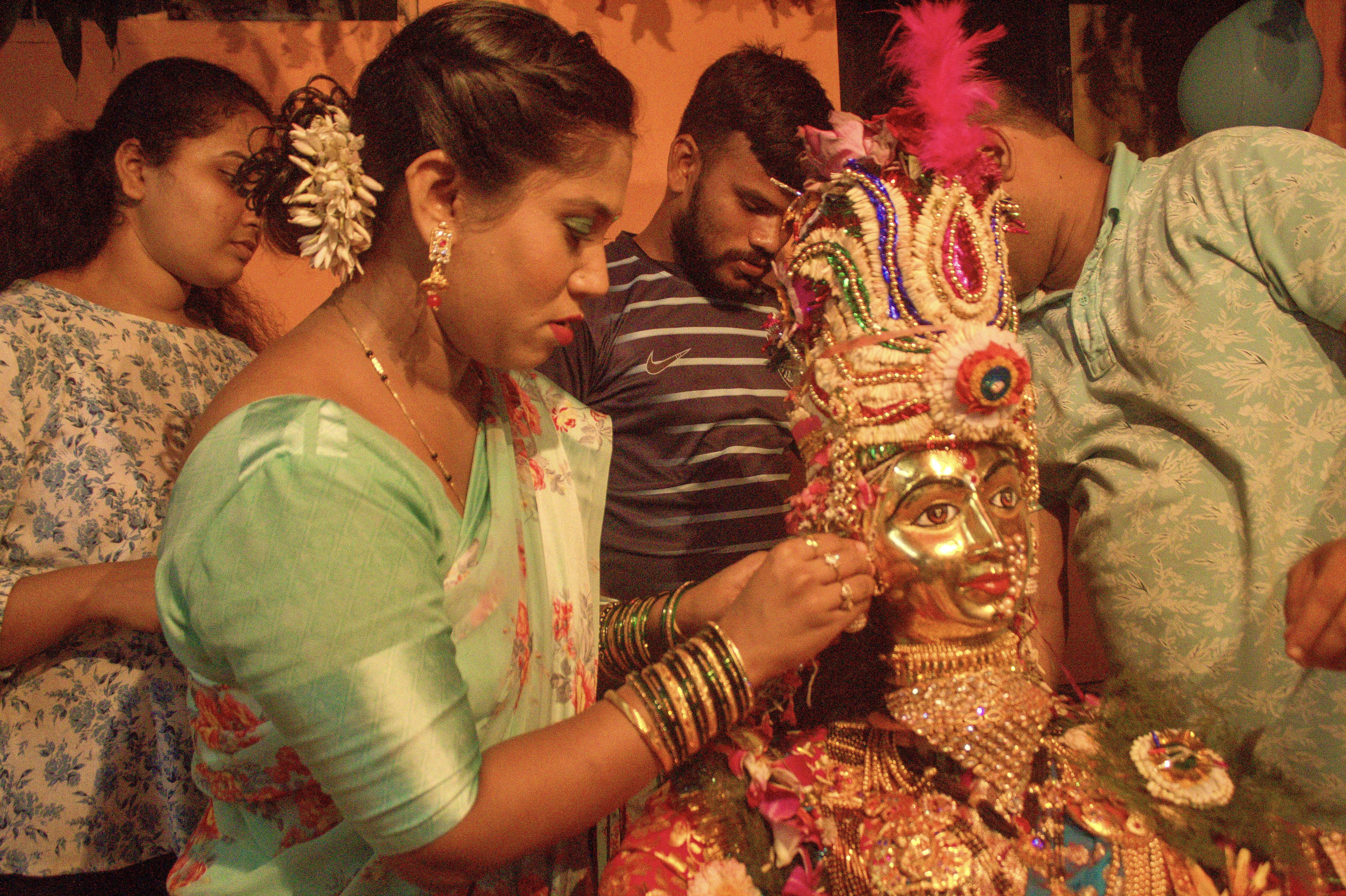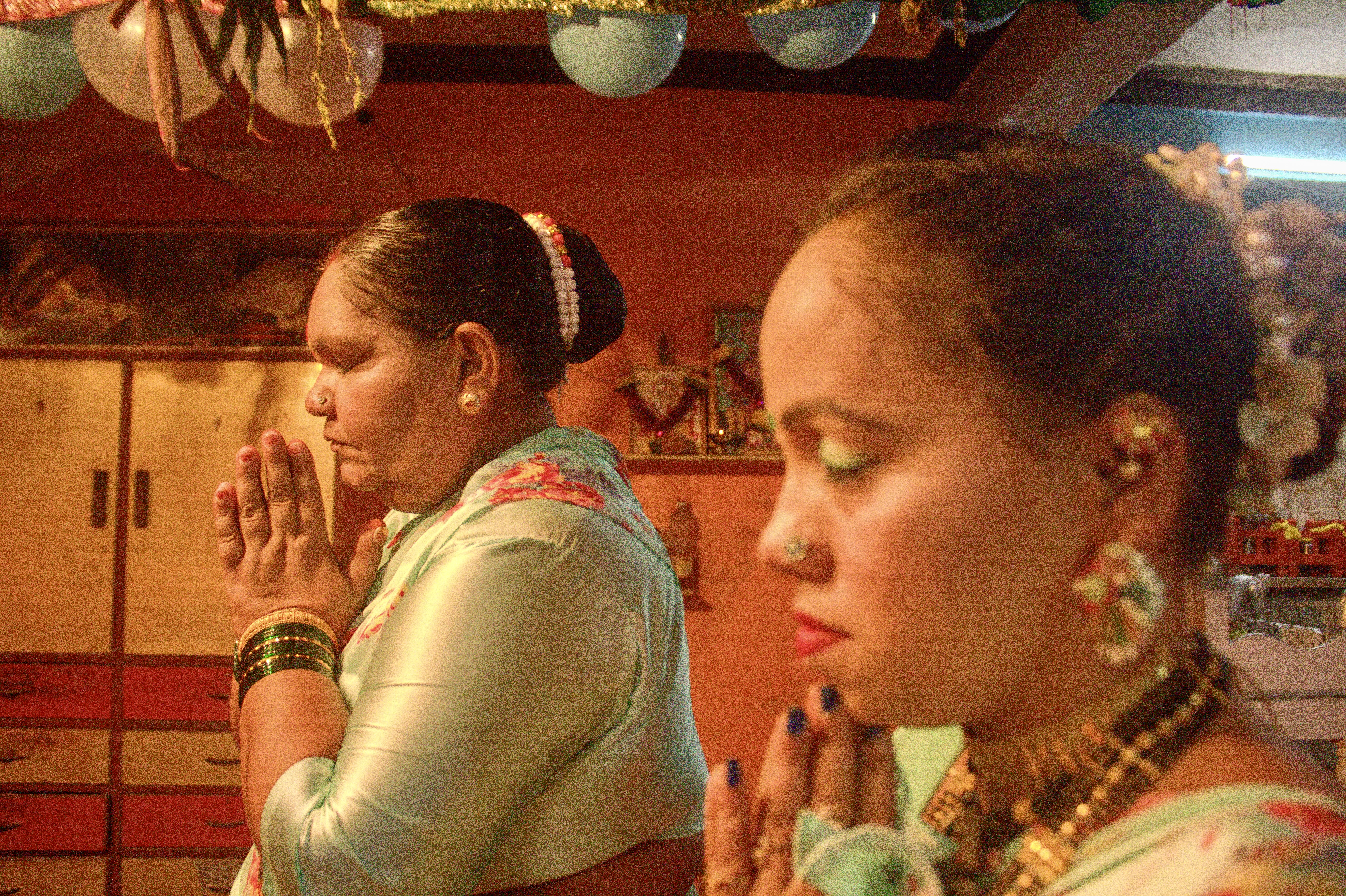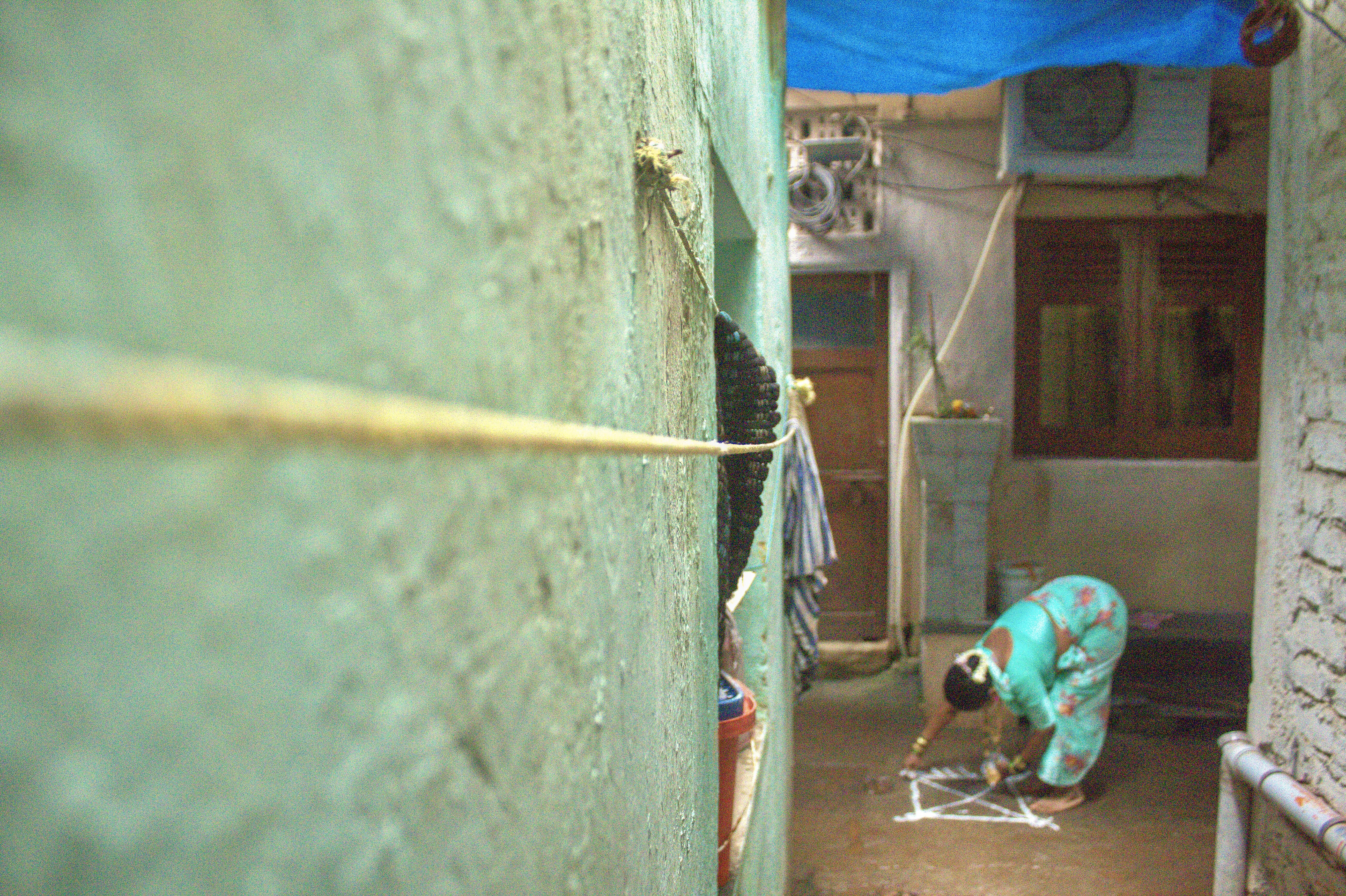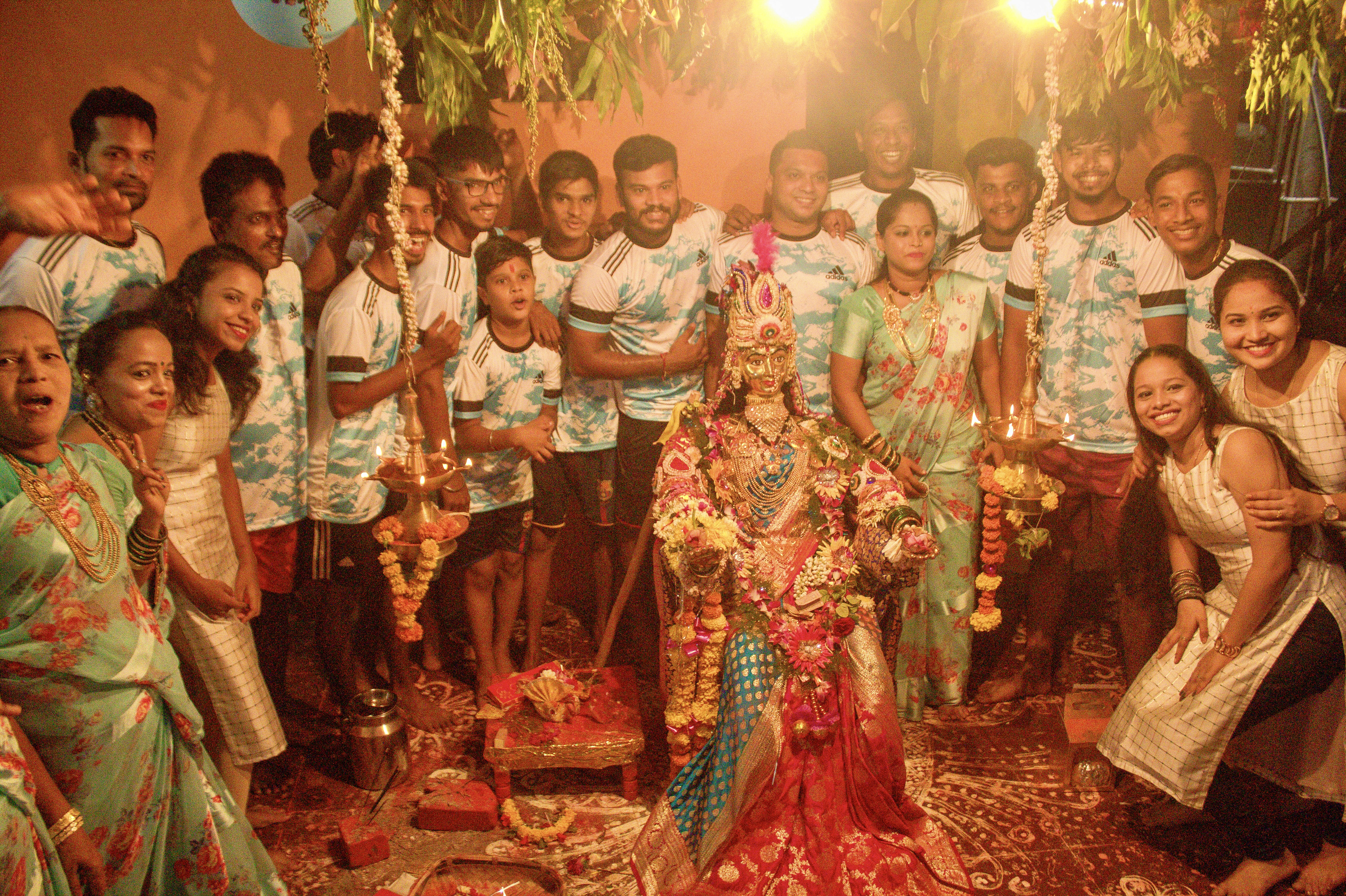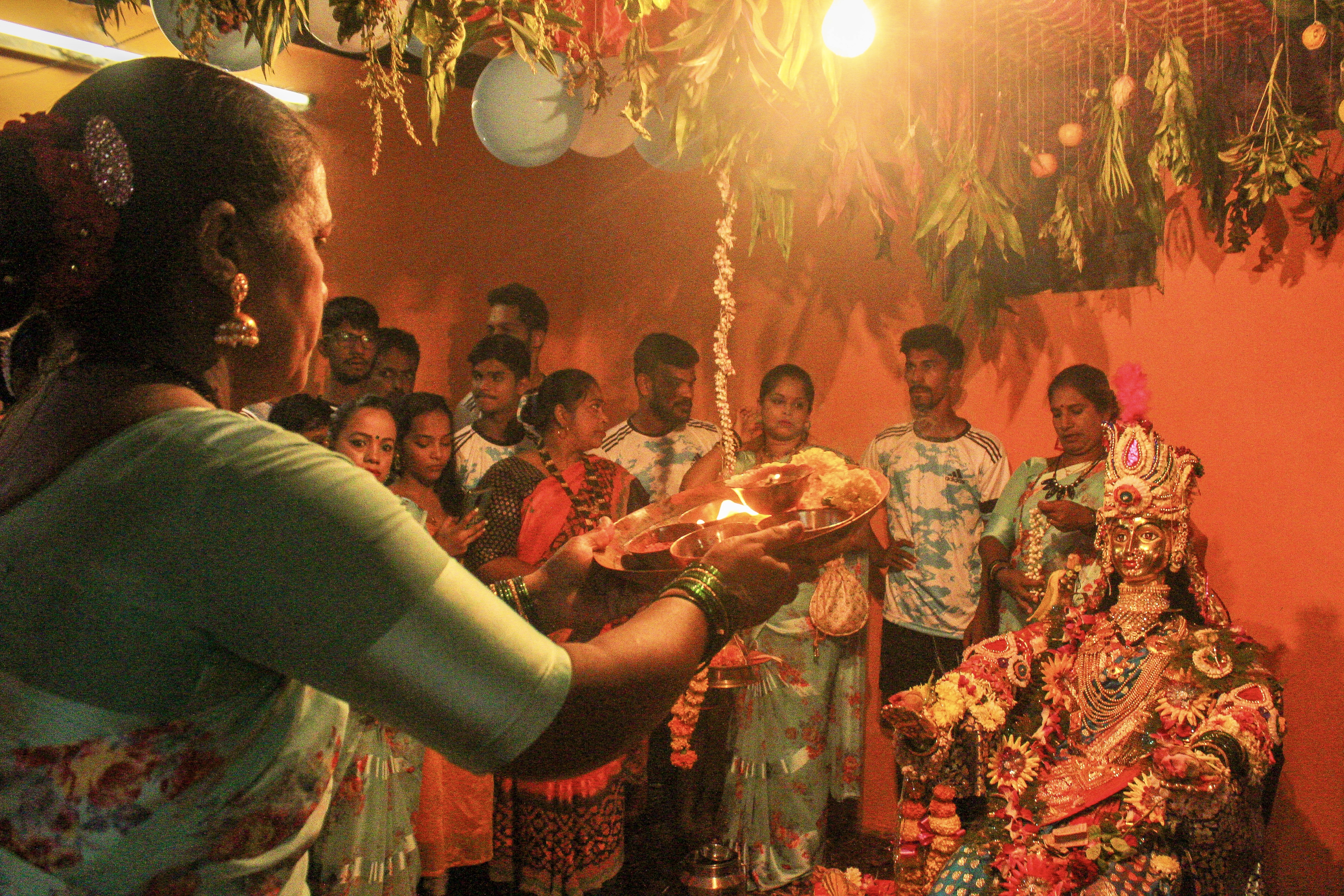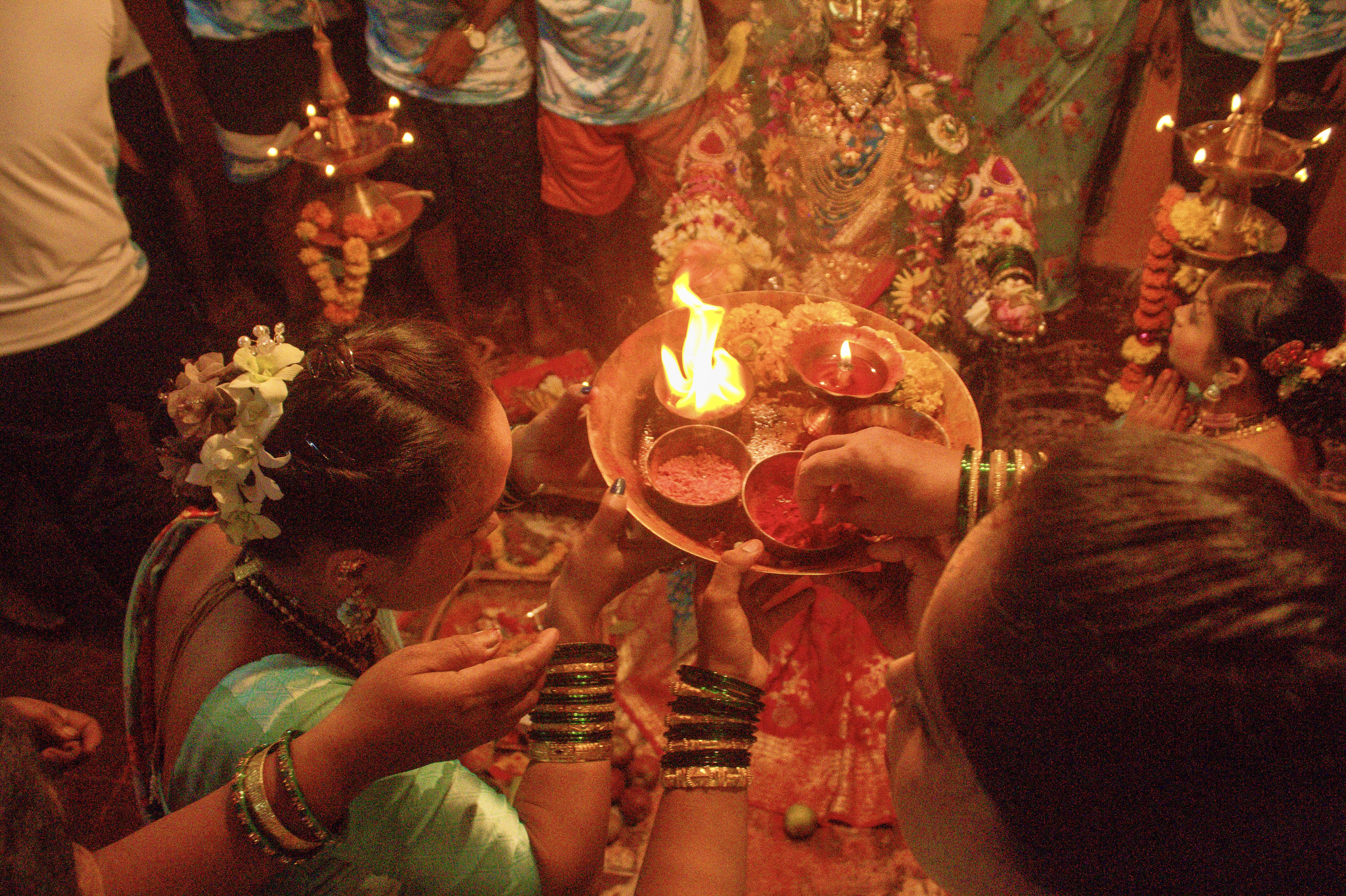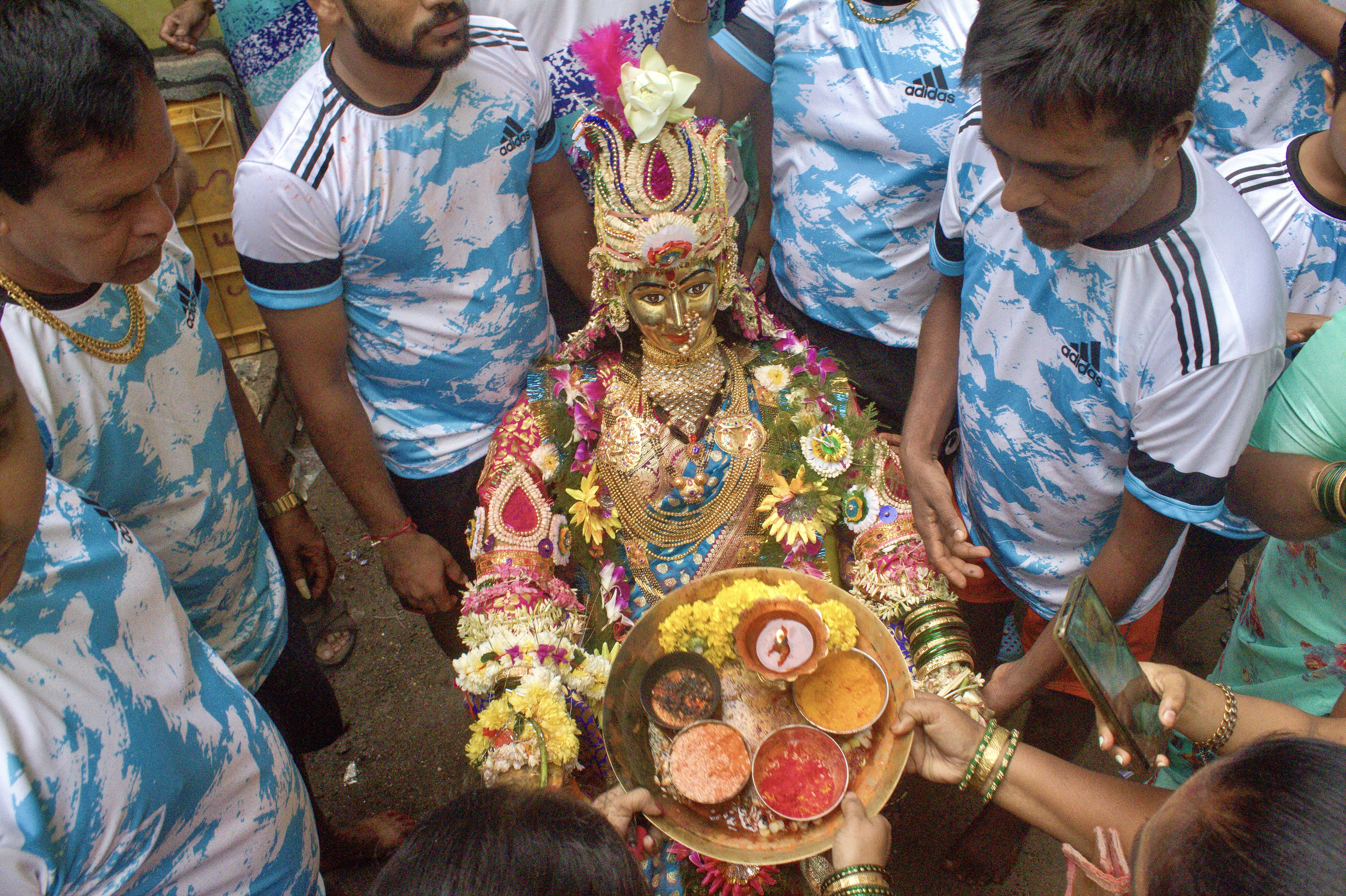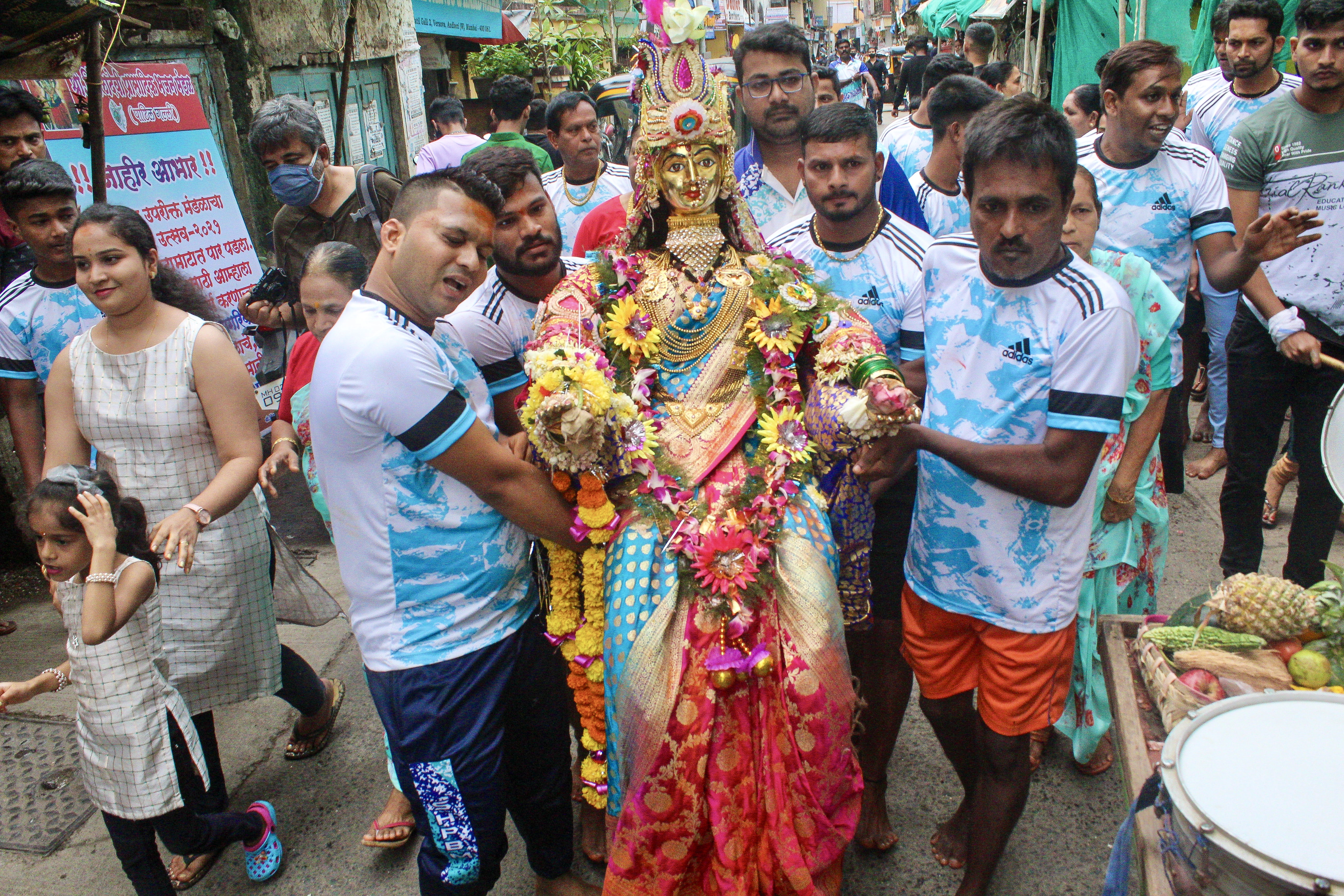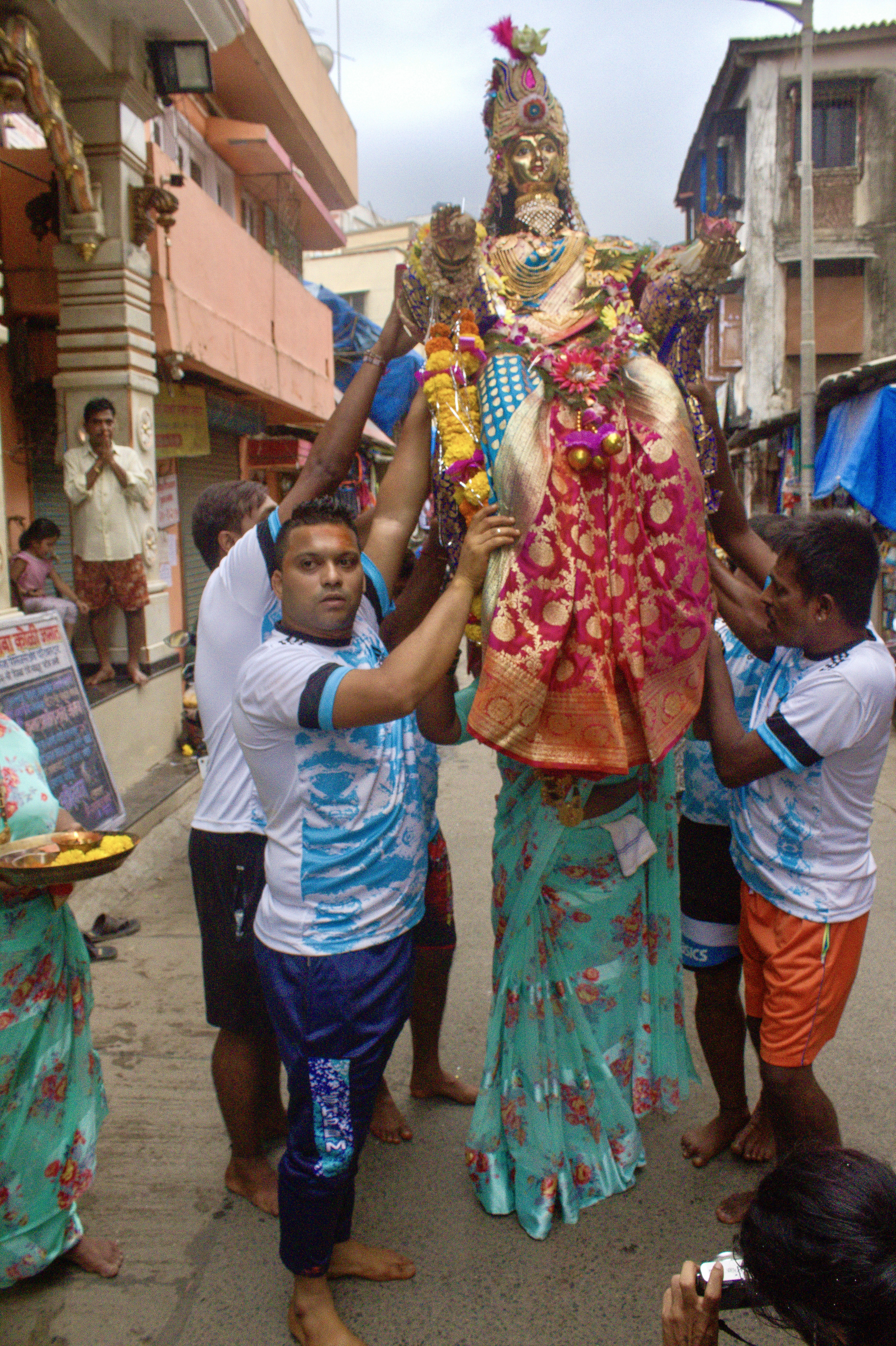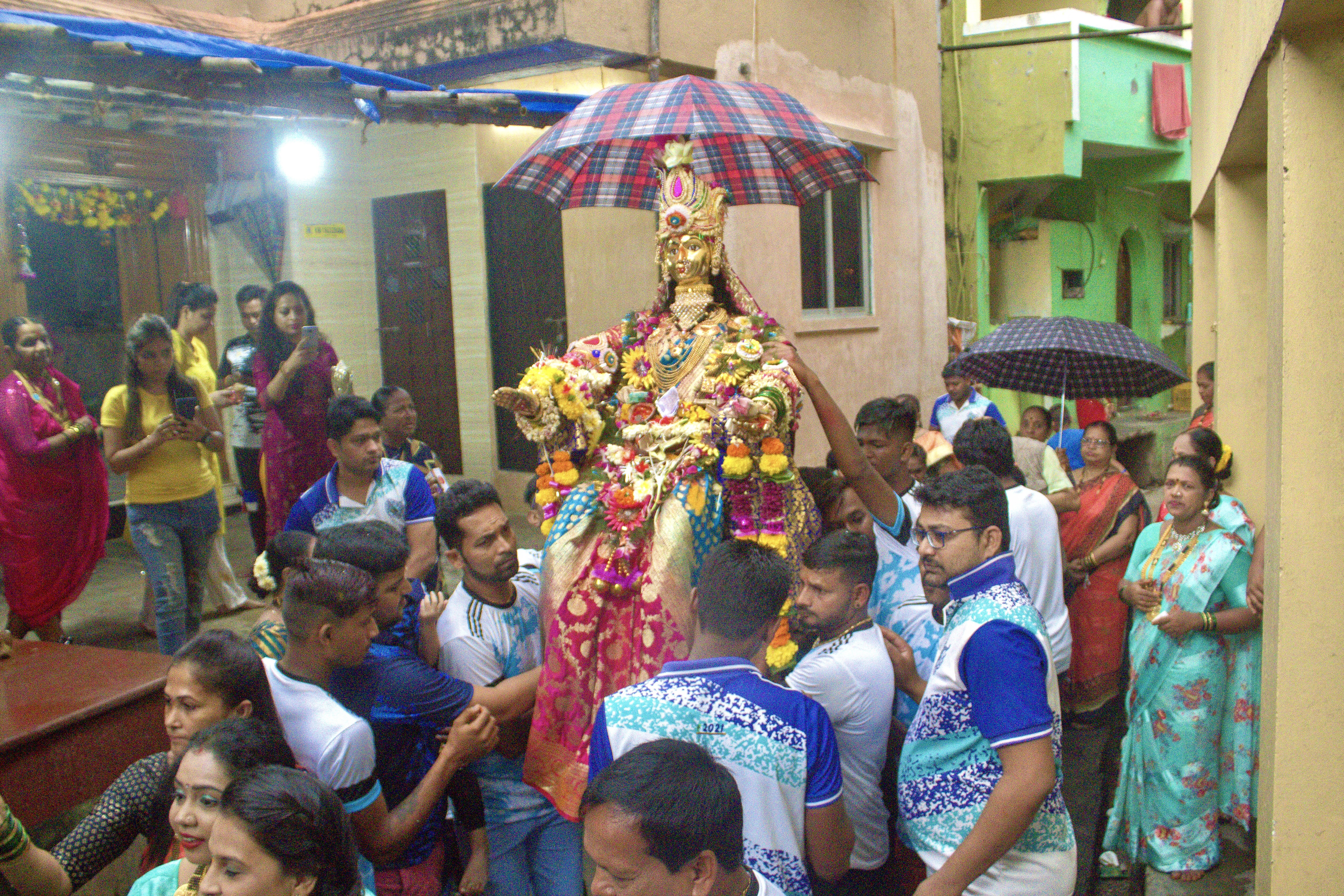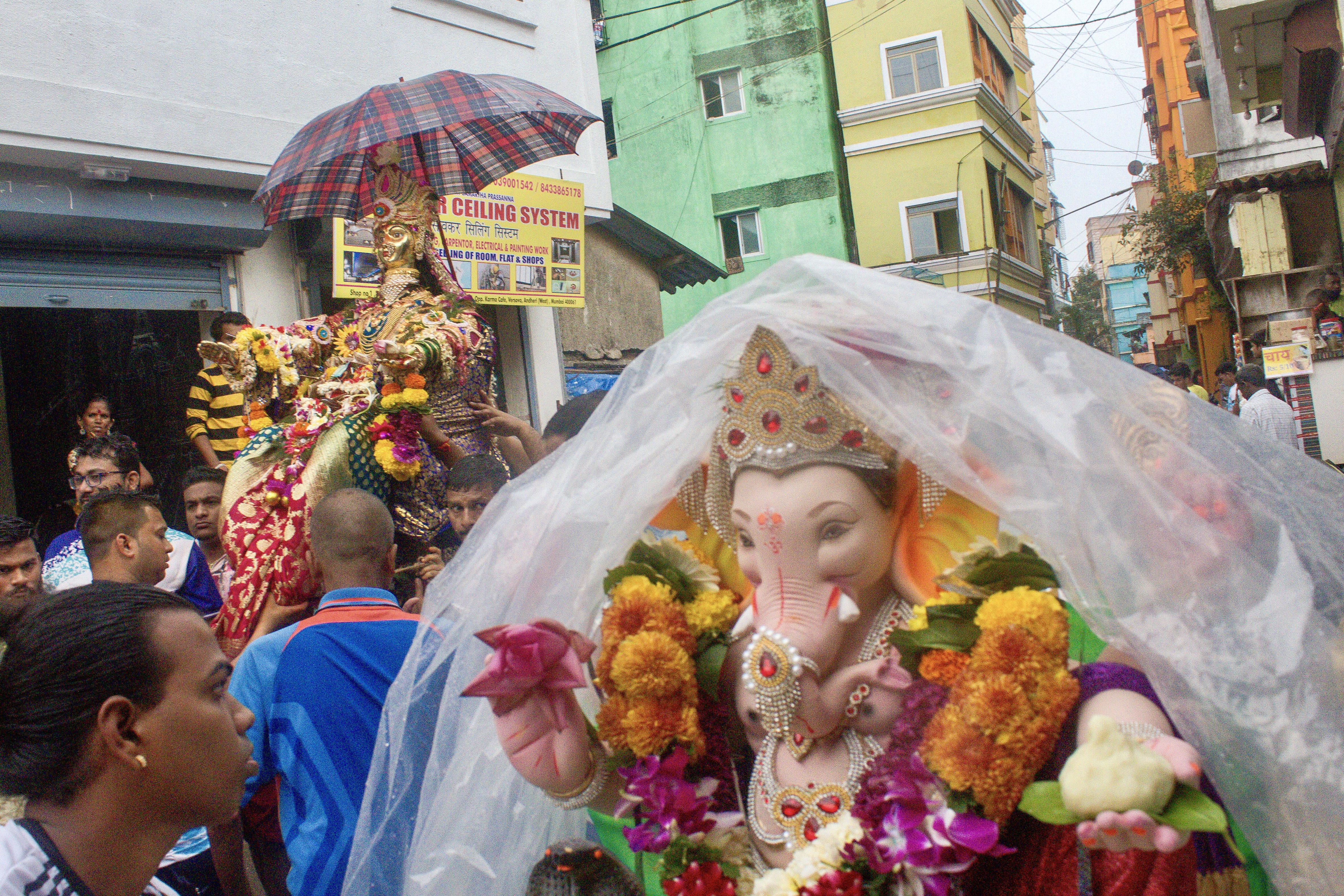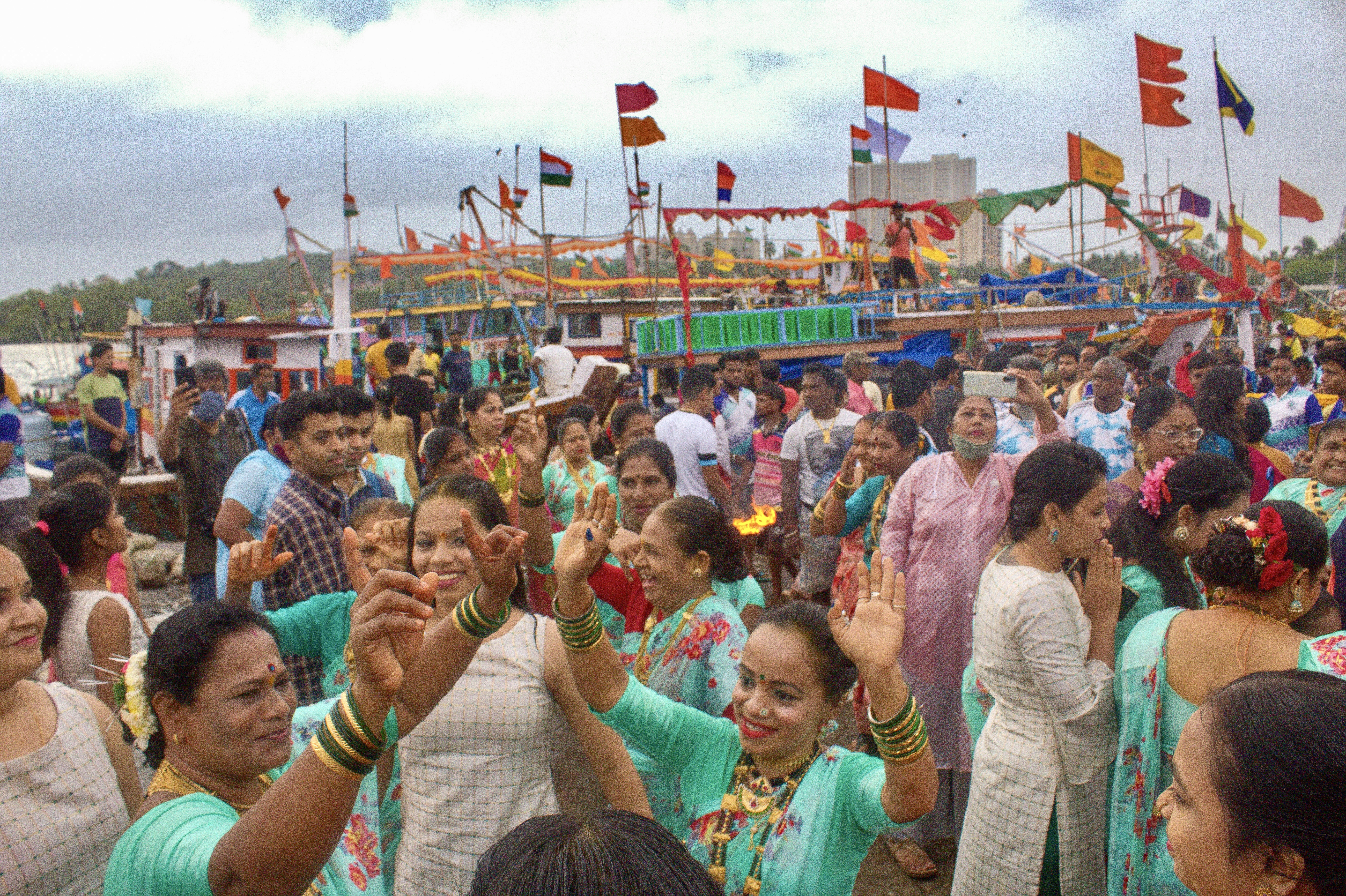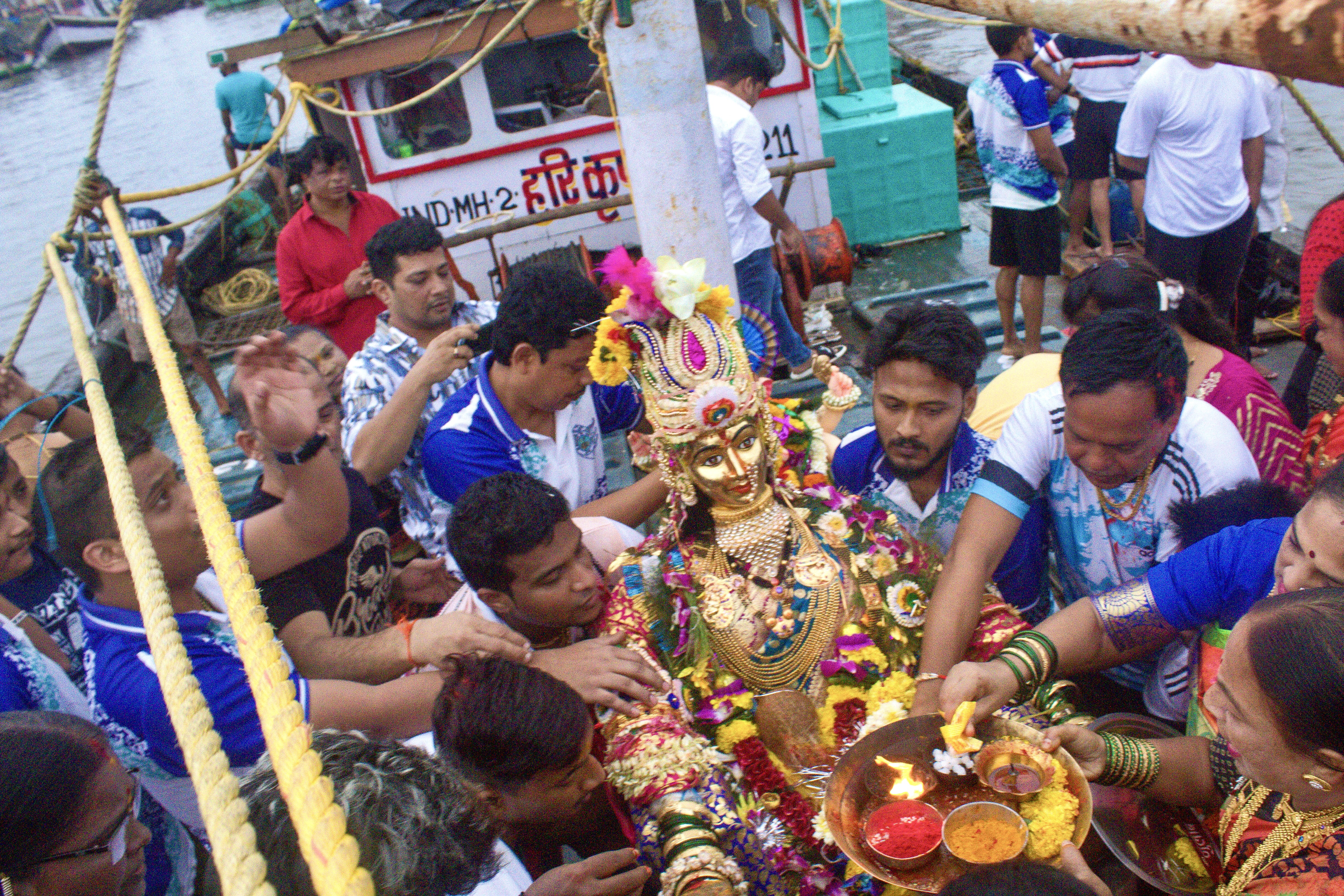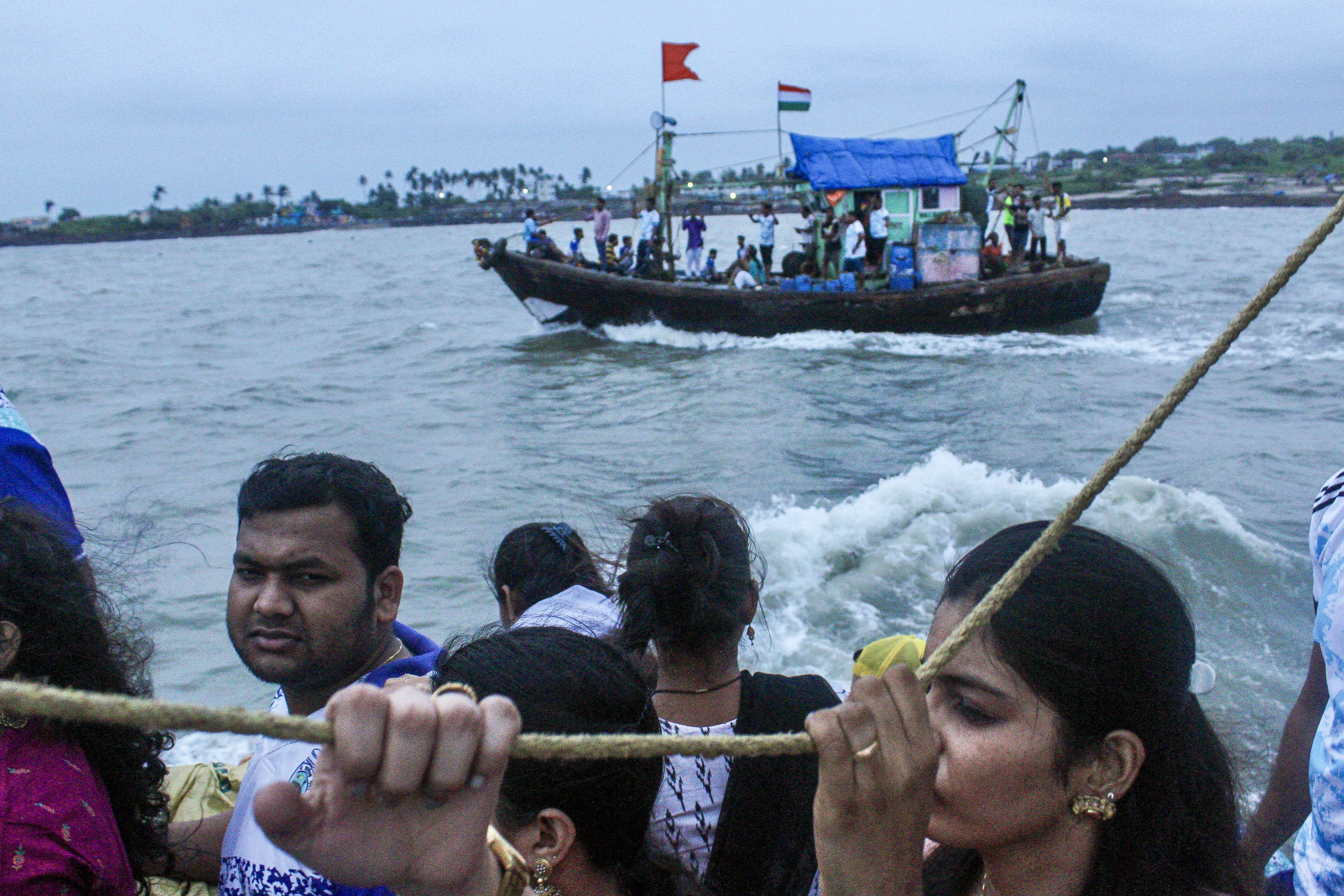The Significance of Jyestha Gauri Pujan in Versova Koliwada
Versova Koliwada, a historic fishing village in Mumbai, exemplifies the Koli community’s tenacity in maintaining their lands, livelihood, and living traditions amidst relentless urbanisation and ecological threats. The Kolis of Mumbai primarily depends on the sea for sustenance, engaging in deep-sea fishing throughout the year, except for a two-month hiatus during the monsoon when the sea is rough and all fishing activities come to a halt. This period coincides with their festive season, starting with Narali Purnima, which marks the beginning of the new fishing season, usually held in August. Soon after is the ten-day festival of Ganesh Chaturthi, which celebrates Lord Ganesha (also known as Vinayaka or Ganapati, among other names), the remover of obstacles and the god of new beginnings, revered universally by Hindus, Jains, and Buddhists.
The Koli community of Versova, like the rest of Maharashtra, commemorates Ganesh Chaturthi with grandeur. In Maharashtra, Gauri Pujan, when the Goddess Gauri visits homes a day or two before the installation of the Ganesha idol, coincides with Ganesh Chaturthi. People regard Goddess Gauri as a manifestation of Parvati, the consort of Lord Shiva and the mother of Lord Ganesha. She is honoured as the goddess of fertility, marital bliss, and prosperity. For the Koli community, Gauri is the protector of their homes and livelihoods, blessing them with bountiful catches and harmonious lives.
In coastal Maharashtra, Gauri is worshipped as a singular goddess known as Jyeshtha Gauri (jyestha meaning the elder one or the senior). In the interior parts of Maharashtra, in the Deccan, Gauri is worshipped together with Kanistha Gauri (kanistha meaning the younger one or junior), popularly known as Mahalakshmi. In coastal Maharashtra, Jyeshtha Gauri is typically worshipped as a metal facemask attached to an anthropomorphic body adorned with traditional Koli attire and jewelry. A new Nauvari saree, the type worn by Koli women, is offered to the goddess and is changed every year.
Jyeshtha Gauri celebrations last for three days during the ten-day Ganesh Chaturthi festival. The first day marks the arrival and installation of the idol; the second day involves the main puja (prayers of devotional homage) and festivities; and the third day is for the visarjan (immersion) of the idol at sea. Koli women play a central role in all the rituals and celebrations. Dressed in traditional attire and jewellery, the women of the household purify the home, perform puja rituals, and prepare offerings with sincerity and devotion. They also led the singing of traditional songs and hymns in praise of Goddess Gauri.
On the first day, families come together to clean and decorate their homes and community spaces. Families decorate their homes with flowers, rangoli (intricate patterns made with coloured powders), and oil lamps. People place special emphasis on beautifying the area where they will install the idol. The arrival of Gauri is a joyous occasion, celebrated with music, singing, and dancing. Priests take the goddess around the house and install her on a high platform. Priests install the idol at an auspicious time, performing the necessary rituals to invoke the goddess's presence. Aarti, the ritual of waving the sacred fire in front of the deity, welcomes the goddess after installation. On the second day, the main worship takes place. The aarti is a communal activity often involving the entire neighbourhood and performed by elder members of the family.
The family typically invites a brahmin priest to perform an elaborate set of rituals on the second day for puja. A kalash (sacred pot) is an essential part of Gauri Pujan. People place it in front of the idol, fill it with water, decorate it with aam patta (mango leaves), and place a coconut inside. Purna-kalasha (pot of abundance) refers to the entire arrangement, symbolizing the goddess's presence and conferring auspiciousness. The use of nariyal (coconut), a fruit that grows abundantly along Mumbai’s coastline, holds significance and symbolism among the Kolis. In this context, the purna-kalasha is a symbolic womb (mother earth), nurturing and nourishing life. The mango leaves are associated with fertility; the coconut symbolizes fertility and prosperity; and the water in the pot represents amrita (the elixir of life).
The goddess receives sixteen special food items prepared as naivedya (sacred food offerings). Sweet items such as modak (Lord Ganesha's favorite sweet) and kheer (sweet pudding) are included. Naivedya preparation entails strict adherence to cleanliness and purity. Before beginning the preparation, the cook thoroughly cleans the kitchen and utensils and takes a purifying bath. Naivedya is typically sattvic (pure, vegetarian) food that is devoid of onions, garlic, and certain other ingredients considered impure in religious offerings.
The ritual begins with a sankalpa (a vow or resolve), during which the devotee mentally commits to offering naivedya to the deity. The devotee places the food on a clean plate or banana leaf and positions it in front of the deity's idol or image. While offering the naivedya, people recite specific mantras, which are believed to possess a special spiritual power, to invite the deity to accept the food. People believe that the deity consumes the essence of the food, distributing it to the devotees as prasad (blessed food). The act of offering naivedya purifies the prasad, infusing it with divine blessings that benefit those who consume it.
Devotees, especially women, observe vrata (a vow of fast) on this day as a mark of devotion and to seek the blessings of Goddess Gauri for health, fertility, long life, and happiness for their loved ones. People recite stories and legends associated with Gauri, highlighting her virtues and divine powers. Women, dressed in traditional attire, perform the rituals together, singing songs and hymns in praise of the goddess. Gauri Pujan's rituals and celebrations reinforce cultural values and traditions while strengthening familial and social bonds. Families visit each other’s homes to participate in the puja and share festive foods.
On the third day, a grand procession takes the Gauri idol to visarjan (immersion). Singing, dancing, and mantra chanting accompany this ritual, symbolising the goddess' return to her divine abode. The Koli fishermen take the goddess to their boats, where they greet her with aarti. Her presence on the boat ensures the safety of the fishermen at sea, as well as a bountiful catch. The boats then make their way to the sea, where a symbolic immersion ceremony takes place. They remove the facemask and immerse it in the sea three times, offering coconuts, flowers, and other items used in the puja ceremony to the sea. The boats return to the harbour, splashing sea water on the devotees before ceremoniously carrying the idols back to their respective homes. The families store the facemask safely until next year’s festival.
Ganesh Chaturthi continues for another week, concluding with visarjan on Anant Chaturdashi (the fourteenth day of the moon’s waxing phase during the month of Bhadrapada according to the Hindu calendar). Through their devotion and collective effort, the residents of Versova Koliwada ensure that the blessings of Goddess Gauri and Lord Ganesha continue to inspire and protect their community. The festival not only brings people together in a spirit of unity and joy but also serves as a reminder of the importance of preserving cultural heritage amidst the changing urban landscape of Mumbai.
Gauri Puja typically lasts for three days. The first day marks the arrival and installation of the idol; the second day involves the main puja (prayers of devotional homage) and festivities; and the third day is for the visarjan (immersion) of the idol at sea.
Families perform Gauri Puja, a modest household event, inside their homes, in contrast to the grand public celebration of Ganesh Chaturthi throughout Mumbai. Coastal Maharashtra worships Gauri as a singular goddess, known as Jyeshtha Gauri (jyestha meaning the elder one or the senior).
The family and the villagers assemble various offerings in front of the goddess. Bananas, rice grains, and coconuts are among the items offered for a bountiful harvest, while boxes of sweets serve as tokens of thanksgiving for the fulfilment of a wish. Some of the offerings may be used to prepare the naivedya (sacred food offerings), which are distributed as prasad (blessed food) after the puja (prayers of devotional homage) ceremony is concluded.
The goddess receives sixteen special food items prepared as naivedya (sacred food offerings). Sweet items such as modak (Lord Ganesha's favorite sweet) and kheer (sweet pudding) are included. People believe that the deity consumes the food's essence and distributes it to the devotees as prasad, or blessed food.
A devotee is in a state of trance during aarti (the ritual of waving the sacred fire in front of the deity). The aarti ceremony is a communal activity, often involving the entire neighbourhood, and performed by elder members of the family.
Music forms an integral part of the rituals, from the arrival of the goddess until the time of visarjan (immersion), when the idol is taken out to the sea.
Goddess Gauri is associated with fertility, and the theme of abundance is recreated inside the house, with fruits and floral hangings tied with mango leaves, a symbol of fertility and prosperity.
In coastal Maharashtra, Jyeshtha Gauri is typically worshipped as a metal facemask attached to an anthropomorphic body adorned with traditional Koli attire and jewellery. Koli women offer the goddess a Nauvari saree, which they change every year.
Koli women play a central role in all the rituals and celebrations. The women of the household, dressed in traditional attire and jewelry, purify the home, perform the puja (prayers of devotional homage) rituals, and prepare the offerings with sincerity and devotion.
On the first day, families come together to clean and decorate their homes and community spaces. Families decorate their homes with flowers, rangoli (intricate patterns made with coloured powders), and oil lamps.
Before visarjan (immersion), Koli boys gather for a group photo with the goddess's idol. The festival not only brings people together in a spirit of unity and joy but also serves as a reminder of the importance of preserving cultural heritage amidst the changing urban landscape of Mumbai.
Priests install the idol at an auspicious time, performing the necessary rituals to invoke the goddess's presence.
People regard Goddess Gauri as an incarnation of Parvati, the consort of Lord Shiva and the mother of Lord Ganesha. People revere her as the goddess of fertility, marital bliss, and prosperity. For the Koli community, Gauri is the protector of their homes and livelihoods, blessing them with bountiful catches and harmonious lives.
A grand procession takes the Gauri idol for visarjan (immersion) on the third day. Singing, dancing, and the chanting of mantras (a word or sound believed to have a special spiritual power) accompany this ritual, symbolizing her return to her divine abode.
Visarjan (immersion) is a communal activity, often involving the entire neighbourhood.
Bearers take turns carrying the idol of the goddess as it passes through Versova Koliwada, stopping at households where aarti (waving the sacred fire in front of the deity) is performed.
Villagers hold up an umbrella to protect the goddess from rain as devotees line the way, seeking darshan (the deity's sight) and praying for her blessings.
In Maharashtra, Gauri Poojan, which takes place a day or two before the installation of the Ganesha idol, aligns with Ganesh Chaturthi. People worship Goddess Gauri as the mother of Lord Ganesha at the same time.
The procession reaches Versova Beach with much fanfare, dancing, and celebrations. The boats used by the Koli fishermen are assembled at the dock, from where they depart for sea carrying the idol of the goddess and devotees for the visarjan (immersion) ceremony.
The fishing boats are specially painted and decorated for Narali Purnima, which takes place a few weeks before Jyestha Gauri Puja. Floral garlands and colourful flags adorn the boats as the new fishing season begins.
The goddess is taken to bless the boats used by the Koli fishermen. The presence of the goddess on the boat ensures the safety of the fishermen at sea and a bountiful catch for the rest of the year.
The boat owners consider it a great honour to receive the goddess on their boat. Aarti is performed when the goddess arrives on deck, and blessings are taken from the scared fire of the aarti.
The boats head for the sea, where a symbolic immersion ceremony is held. The facemask is removed and dipped in the sea three times, while the coconuts are offered to the sea along with flowers and other items used in the puja (prayers of devotional homage) ceremony.
Devotees are splashed with sea water, and the boats return to the harbour, from where the idols are ceremoniously carried back to their respective homes. The families store the facemask safely until next year’s festival.
